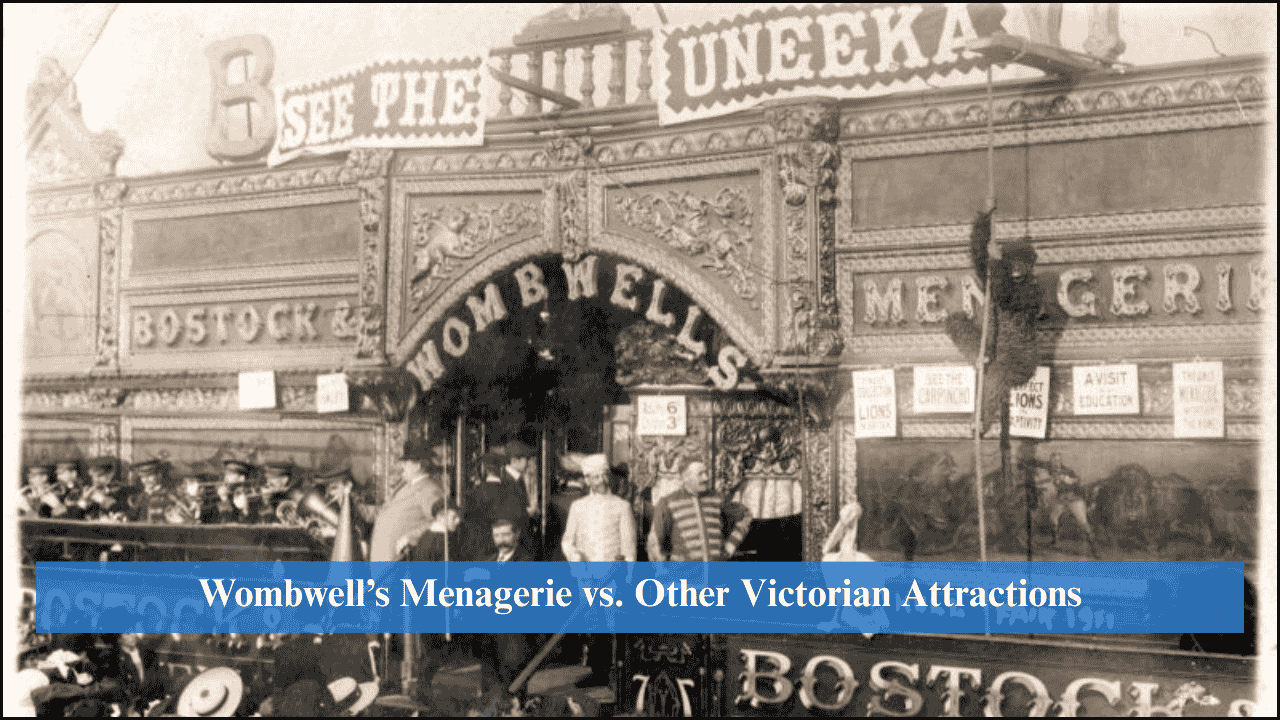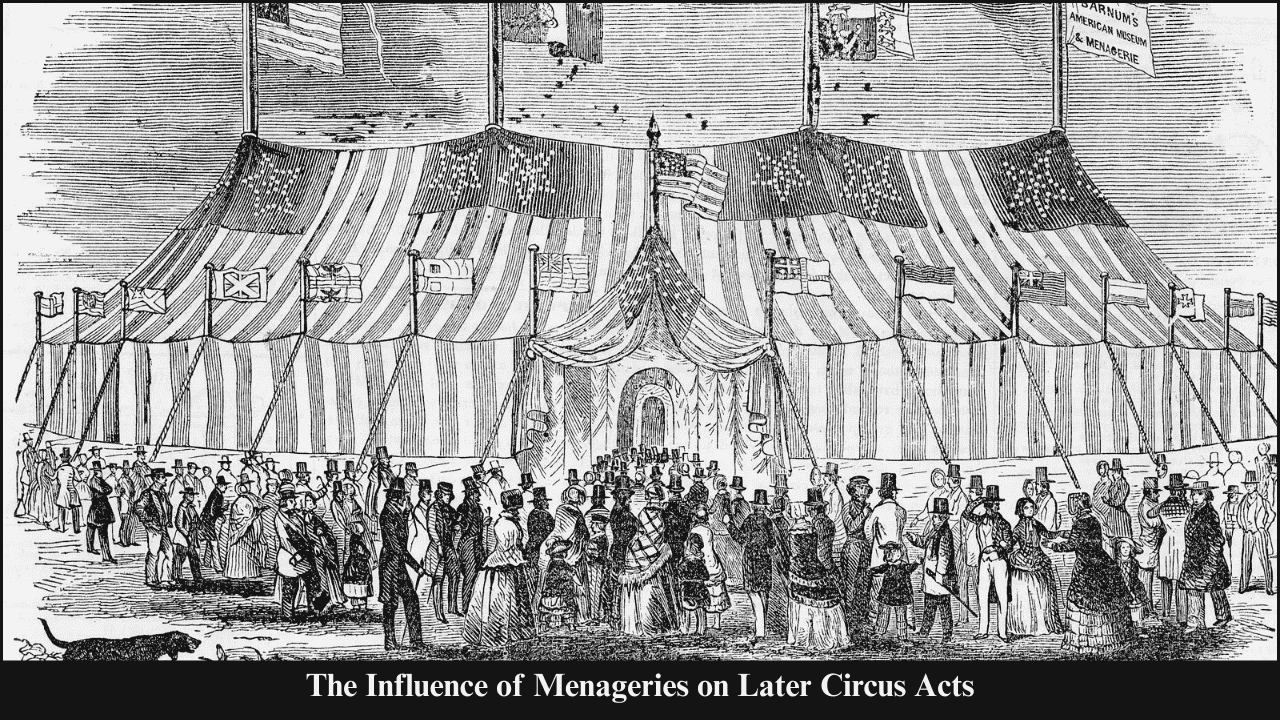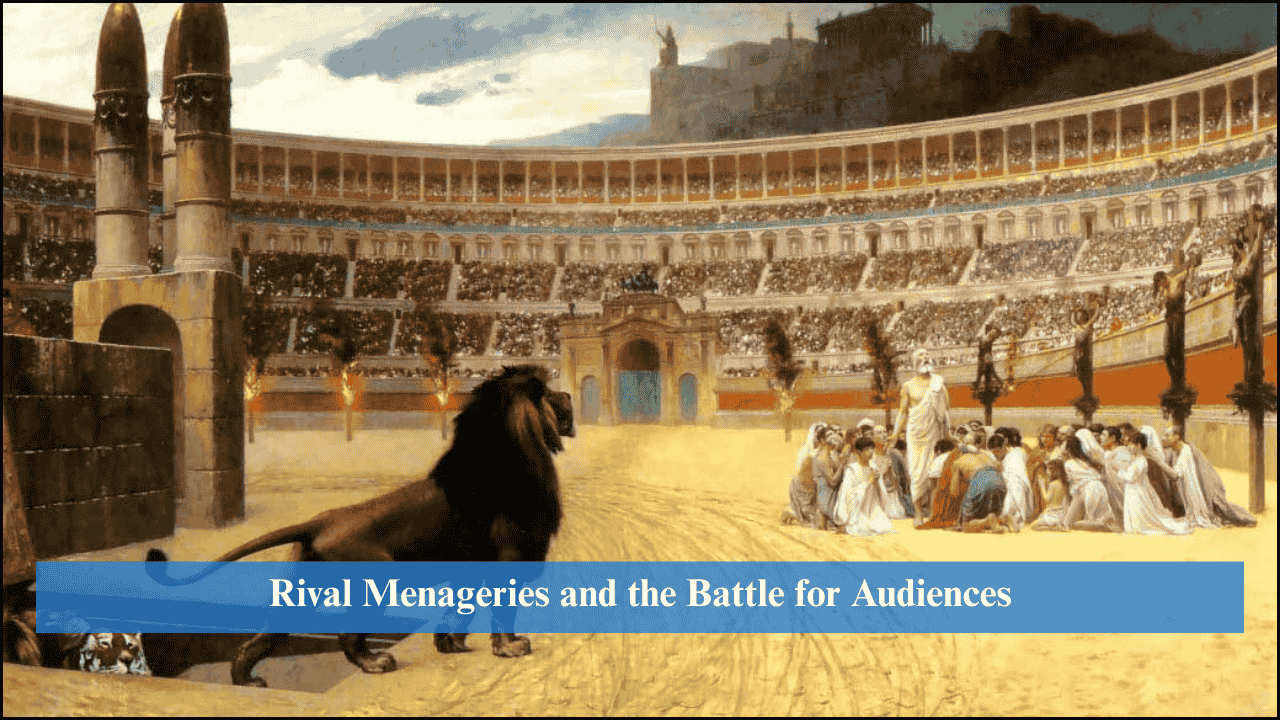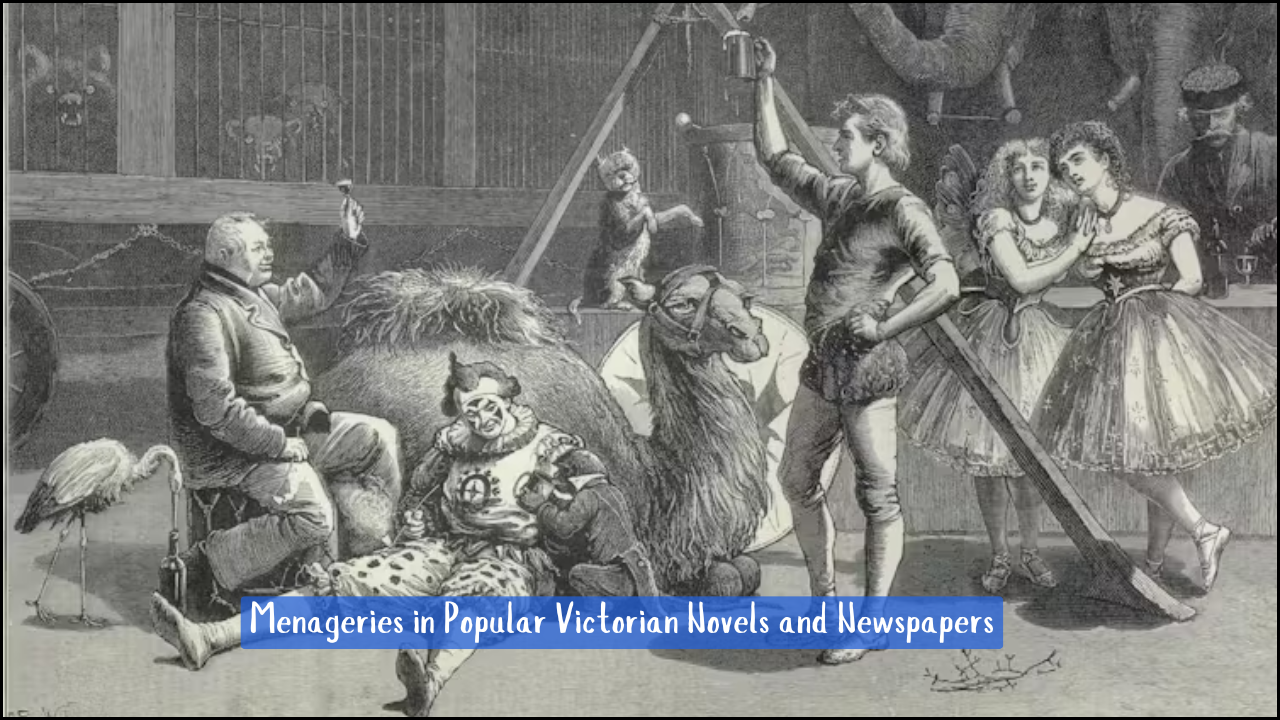
The George Wombwell Collection represents one of the most fascinating archives of British cultural history, preserving the memory of travelling menageries, fairs, and popular entertainment in the 19th and 20th centuries. A travelling menagerie was not just an exhibition of exotic animals; it was also a spectacle of social life, advertising art, and public fascination with the unfamiliar. The collection gathers postcards, programmes, posters, photographs, and ephemera that document how travelling shows shaped entertainment and leisure in Britain. The materials serve as valuable resources for researchers, educators, and enthusiasts who wish to explore the connections between spectacle, society, and commerce.
Table of Contents
Overview of the Collection
- Digitised Access
- The collection is digitised to make it widely accessible.
- Materials can be viewed for educational and personal purposes.
- Digital reproductions preserve fragile originals for future generations.
- Content Range
- Artefacts include postcards, programmes, posters, and photographic records.
- Items provide insight into travelling menageries, fairs, and public responses.
- Categories allow users to explore themes such as performance, marketing, and fairground traditions.
- Usage Rights
- Copyright remains with the collection or respective owners.
- Educational and research use is permitted with proper acknowledgement.
- Commercial applications require official arrangements.
Historical Importance of Travelling Menageries
- Public Entertainment
- Menageries were among the earliest mass entertainment forms in Britain.
- Exotic animals fascinated audiences who had little exposure to them otherwise.
- The shows were advertised as educational while also offering spectacle.
- Social Context
- Fairs and menageries often became gathering points for entire communities.
- Visitors ranged from working-class families to curious elites.
- These events provided opportunities for shared cultural experiences.
- Controversies
- Some city officials viewed menageries and fairs as disruptive.
- Criticism included accusations of crime, drunkenness, and immoral behaviour.
- Animal welfare concerns also became more prominent in later years.
Photographic Records of the Great Fairs of Britain
The collection contains valuable photographic documentation of major fairs where travelling menageries were displayed.
Nottingham Goose Fair
- Bostock and Wombwell held the prime pitch opposite Queen Victoria’s statue.
- Location symbolised prestige and dominance in the fairground hierarchy.
- Repeated occupation of the site reinforced their reputation as the leading menagerie.
Hull Fair
- An annual tradition where Bostock and Wombwell participated regularly.
- Provided access to a large northern audience.
- Demonstrated how travelling menageries integrated into established fair circuits.
Bartholomew Fair
- London’s Smithfield Market hosted this premier event until 1855.
- Fair drew massive crowds but was criticised by city authorities.
- Tensions arose over claims of increased crime and moral decline.
- Despite criticism, it was central to the popular culture of the era.
Types of Artefacts in the Collection
| Category | Description | Historical Value |
|---|---|---|
| Postcards | Illustrated cards depicting animals, fairground scenes, and menageries. | Offer insight into visual culture and early marketing. |
| Programmes | Printed schedules and descriptions of shows. | Show how performances were structured and advertised. |
| Photographs | Records of fairs, performers, and menageries. | Capture the authenticity of events and settings. |
| Ephemera | Tickets, leaflets, and advertising slips. | Highlight everyday interactions between the audience and menageries. |
| Posters | Large-scale printed advertisements. | Demonstrate the bold style of 19th-century promotion. |
Educational and Research Value
- Cultural Studies
- Materials reveal how Victorian and Edwardian society viewed spectacle.
- Analysis of design and language shows shifts in advertising strategies.
- Items document the growth of public entertainment industries.
- Historical Research
- Primary sources provide evidence of fairground economics and logistics.
- They show how menageries competed for space and public attention.
- Research can explore changing attitudes toward animals and entertainment.
- Artistic Insights
- Posters and postcards reveal aesthetic trends of the period.
- Hand-drawn designs contrast with later photographic promotion.
- Artistic depictions often exaggerated scale and spectacle.
Travelling Menageries and British Identity
- Exoticism
- Exotic animals symbolised Britain’s imperial reach.
- Menageries allowed the public to see creatures from colonies and beyond.
- This reinforced ideas of exploration and empire.
- Education vs. Entertainment
- Promoters often claimed menageries were educational.
- In reality, the shows blended curiosity with theatricality.
- Performances dramatised animals’ behaviour for crowd appeal.
- Community Significance
- Annual visits became part of the local tradition.
- Families anticipated the return of the menageries each year.
- Shared experiences strengthened local identities.
Impact on Fairground Culture
| Aspect | Impact of Menageries |
|---|---|
| Spatial Arrangement | Menageries often secured the most visible pitches. |
| Advertising | Posters dominated streets and fairground entrances. |
| Crowd Drawing Power | Exotic animals attracted more visitors than other acts. |
| Competition | Menageries competed with circuses and theatres. |
| Integration | Became a permanent part of Britain’s fair circuits. |
Preservation and Legacy
- Digitisation Efforts
- Protects fragile physical items from damage.
- Increases accessibility for global audiences.
- Ensures longevity of the collection for researchers.
- Legacy of Wombwell’s Menageries
- George Wombwell became synonymous with travelling menageries.
- His name continued through successors such as Bostock and Wombwell.
- The brand represented reliability and spectacle.
- Continuing Relevance
- Today, the collection offers lessons on media, advertising, and public culture.
- It helps historians trace transformations in leisure and social values.
- The material inspires new scholarship in cultural and animal history.
Unique Features of the Collection
| Feature | Significance |
|---|---|
| Breadth of Content | Covers multiple forms of artefacts from different decades. |
| Fairground Focus | Highlights Britain’s most famous fairs. |
| Cultural Context | Connects entertainment to broader social issues. |
| Accessibility | Digital access allows learning beyond geographical limits. |
| Visual Records | Provides rare photographic evidence of events long gone. |
Summing Up
The George Wombwell Collection serves as a remarkable gateway into the world of travelling menageries and the fairground traditions that shaped British cultural life. Each postcard, poster, and photograph preserves not only the spectacle of exotic animals but also the stories of communities, traditions, and public attitudes. Digitisation ensures that this heritage remains accessible for education, research, and cultural reflection. By exploring this collection, one uncovers the intertwined histories of entertainment, advertising, and social gatherings that defined 19th and 20th-century Britain.





